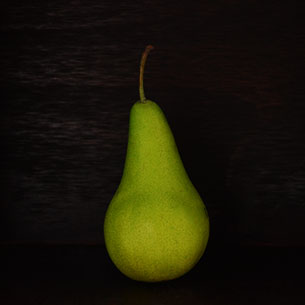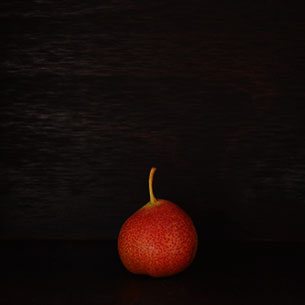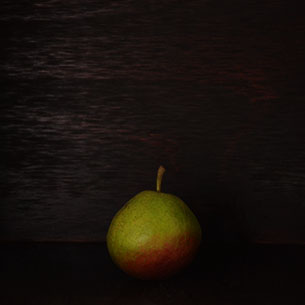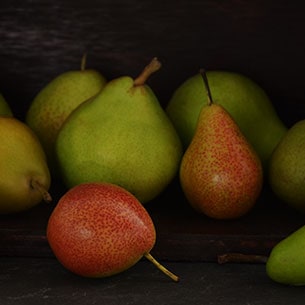Bartlett, Bosc, D’Anjou. These are the varieties that typically come to mind when one thinks of pears. It makes sense as these are the most commonly grown in the United States and are in stores most of the year. But winter offers plenty of opportunities for boredom, and now is the time to spice things up with some of the lesser-known pear varieties. They are all excellent options for holiday fruit and cheese platters as well as unique additions to salads. These niche varieties are generally only available during the fall and winter months so don’t wait to give them a try!
COMICE – Exceptionally sweet and juicy, the “Christmas Pear”
 The Comice pear’s proper name is Doyenné Du Comice, indicating its French origin. It was first propagated in the mid-1800s near Angers, a city in western France. It’s often called the “Christmas Pear” because of its prominence in holiday gift baskets.
The Comice pear’s proper name is Doyenné Du Comice, indicating its French origin. It was first propagated in the mid-1800s near Angers, a city in western France. It’s often called the “Christmas Pear” because of its prominence in holiday gift baskets.
Comice pears can be found in a variety of sizes from petite to jumbo, but it is their rotund body and nearly non-existent neck that distinguish their appearance from the other varieties. They are most frequently green with an occasional red blush. The green sometimes fades to yellow as the pear ripens, but color is not always the best indicator of ripeness. Gently check for softening around the stem to determine ripeness. Don’t worry if you see blemishes on the Comice’s fragile skin; this pear is so juicy that a little bruising often doesn’t affect the texture.
Comice pears are acclaimed for their elegant, custard-like texture and sweet, full-bodied flavor. Because of this, they are frequently the go-to dessert pear.
The strong, salty flavor of Stilton or Roquefort cheeses contrasts well with the juicy sweetness of the Comice.
CONCORDE – Versatility and flavor in an elegant package
 Concorde pears are a cross between the Comice and Conference that was developed near London in the 1960s.
Concorde pears are a cross between the Comice and Conference that was developed near London in the 1960s.
The Concorde takes much of its shape from its Conference parent and is easy to identify by its long, tapered neck and round base. Its yellow green skin is thin, smooth, and may occasionally have golden russeting.
Concorde pears combine the juicy sweetness of the Comice and the versatility of the Conference. Their Conference heritage makes the Concorde pear suitable to eat at any stage of ripening, depending on flavor and texture preference. If you like a denser, crunchy texture, you can enjoy the Concorde immediately. If you prefer a softer fruit with a subdued vanilla flavor, simply ripen the Concorde a little longer.
Concordes are an all-purpose pear that works well in fresh or cooked applications. Because of their shape, they are suited especially well to recipes that use the whole fruit, such as poaching or baking.
FORELLE – Strikingly beautiful and equally delectable
 The Forelle pear is thought to have originated in northern Germany sometime in the 1600s. Despite being one of the oldest European varieties, the Forelle is probably the least common commercially-grown pear. They were introduced to the United States by German immigrants in the 1800s.
The Forelle pear is thought to have originated in northern Germany sometime in the 1600s. Despite being one of the oldest European varieties, the Forelle is probably the least common commercially-grown pear. They were introduced to the United States by German immigrants in the 1800s.
The Forelle’s petite size and colorful skin make it a gorgeous fruit to display as well as to eat. In fact, the name “Forelle” translates to “trout” in German and was probably given to the pear because of its skin’s resemblance to the vibrant scales of a Rainbow trout. Forelles are one of the few pears that change color as they ripen; their green skin lightens to yellow under the red freckling.
Forelle pears are delicately sweet with a slight tartness and crisp texture. This light crunch remains even when ripe.
The crisp texture of the Forelle pairs well with semi-soft cheeses such as Port Salut or Maytag Blue.
SECKEL – Darling, bite-sized morsels of sweetness
 It is possible that the Seckel pear is the only variety native to North America, having been discovered in the early 1800s as a wild seedling somewhere around Philadelphia. Another possibility is that westward-bound German immigrants left fruit or seeds behind.
It is possible that the Seckel pear is the only variety native to North America, having been discovered in the early 1800s as a wild seedling somewhere around Philadelphia. Another possibility is that westward-bound German immigrants left fruit or seeds behind.
Seckel pears typically have an olive green skin that often has a maroon blush over part or all of the fruit. The Seckel does not change color as it ripens, but it does soften around the stem.
These pears are adorable roly-poly pieces of fruit that are juicy and super-sweet, a trait that has garnered them the nickname “sugar pears” or “candy pears.”
The juicy flavor of the Seckel makes it an excellent match for dense, creamy cheeses like Fontina or Havarti.

